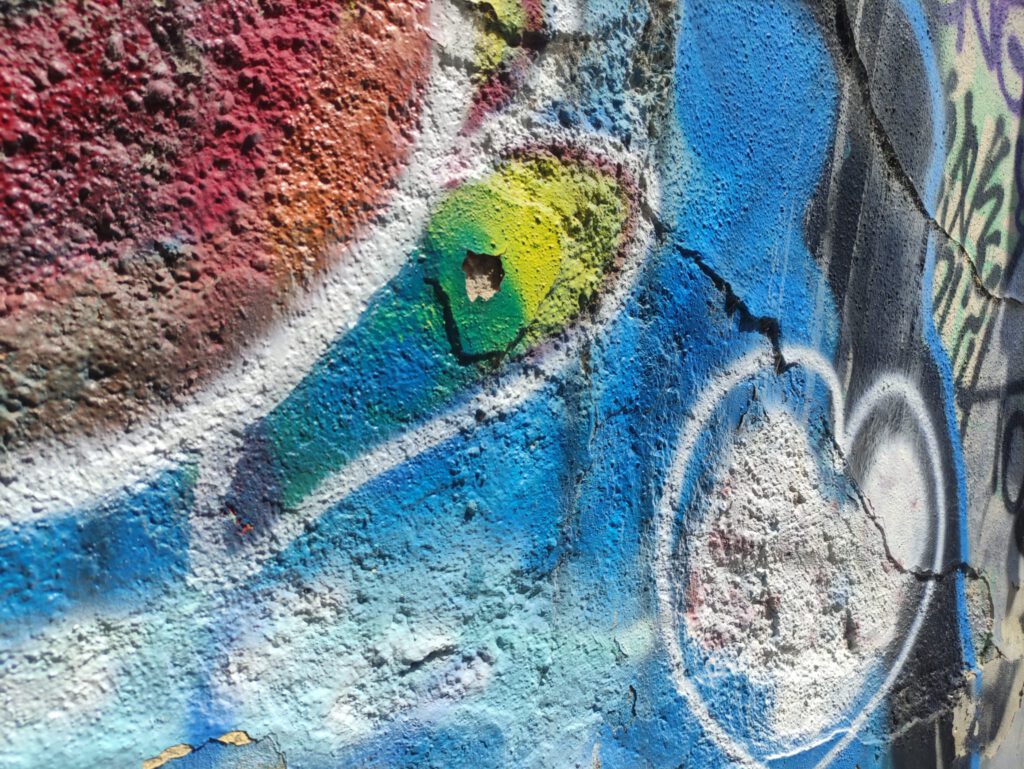The Story of Color Stone Graffiti: Transforming Urban Surfaces
Color stone graffiti is a unique and innovative form of street art that blends vibrant colors with the natural textures of stone surfaces. This style leverages the rugged, tactile quality of stone to create striking visual contrasts and immersive artistic experiences in urban environments.
The Concept of Color Stone Graffiti: Color stone graffiti involves applying bright, bold colors to stone surfaces, such as walls, bridges, or even rock faces. The rough, uneven texture of the stone becomes an integral part of the artwork, adding depth and complexity to the piece. Artists use various techniques to interact with the natural features of the stone, creating dynamic compositions that highlight the contrast between the organic surface and the vivid colors.
Origins and Development: The practice of color stone graffiti emerged in the late 2000s as artists began exploring new ways to integrate graffiti into unconventional surfaces. Influenced by traditional graffiti techniques and modern street art, this style evolved as artists sought to push the boundaries of urban art by working with the unique properties of stone. Over time, color stone graffiti has gained recognition for its innovative approach and visually compelling results.
Key Characteristics and Techniques: Color stone graffiti is distinguished by its interaction with stone surfaces. Key characteristics include:
- Bold Colors: Artists use a range of vibrant colors to create eye-catching contrasts against the natural stone.
- Texture Integration: The rough texture of the stone adds dimension and complexity to the artwork, enhancing the visual impact.
- Techniques: Techniques may include spray painting, stenciling, and freehand application, allowing artists to adapt to the irregularities of the stone surface.
- Composition: The composition often incorporates the natural lines and shapes of the stone, blending them with the painted elements for a cohesive and dynamic effect.
Cultural and Artistic Impact: Color stone graffiti has made a significant impact on the street art scene by introducing a new way of engaging with urban spaces. By using stone as a canvas, artists create artworks that are both visually striking and contextually relevant. This style also reflects a growing trend in street art to incorporate natural elements and explore the relationship between art and its environment.
Notable Artists and Works: Several artists have made notable contributions to color stone graffiti. For example, “Martha Cooper,” known for documenting street art, has captured the evolution of graffiti styles, including color stone graffiti. “Blu,” an artist famous for his large-scale murals, has experimented with different surfaces and techniques, occasionally incorporating elements of stone into his work. Their contributions highlight the innovative spirit and versatility of color stone graffiti.
Public Perception and Challenges: Color stone graffiti is often well-received for its artistic originality and visual impact. However, like all graffiti, it can face challenges related to legality and property rights. Unauthorized works on public or private stone surfaces can lead to conflicts with property owners and local authorities. Despite these challenges, the increasing acceptance of street art as a legitimate form of expression helps to address some of these issues.
The Future of Color Stone Graffiti: The future of color stone graffiti is promising as artists continue to explore new techniques and surfaces. Advances in paint technology and a growing appreciation for innovative street art will likely drive further development in this style. Color stone graffiti will continue to be an exciting and influential part of the urban art landscape, offering new ways to engage with and transform public spaces.
Conclusion: Color stone graffiti is a distinctive and engaging art form that combines vibrant colors with the natural textures of stone. By transforming stone surfaces into dynamic canvases, artists create visually stunning and contextually rich artworks that enhance urban environments. As this style evolves, it will remain a significant and innovative aspect of street art.
